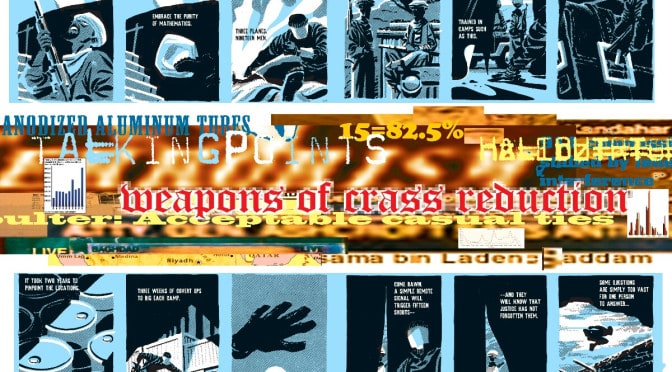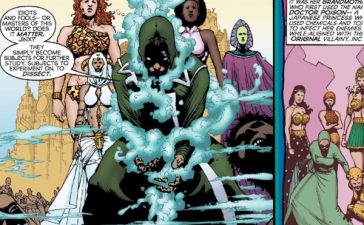

by Darwyn Cooke
There is a notion that something is a creators “best work” and then there is a creator at their best. I’d wager that DC New Frontier is Darwyn Cooke’s best work as an overall comic from start to finish. But if we are talking the cartoonist at his best, that will always be Solo #5; perhaps the greatest showcase for the creators incredibly diverse skill sets and style in addition to being a bittersweet reminder of what could have been. Solo was a DC Comics series that would hand over each single issue to an individual artist to create a story within the DC Comics universe with little to no parameters on content or direction. By the time Cooke got his chapter, the book had already featured issue’s from iconic comic’s artist’s Paul Pope, Tim Sale, Howard Chaykin & Richard Corben. At the time of it’s release, while plenty famous for his work on Catwoman & DC New Frontier, Cooke was still a relative new comer to comics by comparison. Moreover, while Cooke had clearly established a singular style in the short time he had spent in industry, most of his work had been tethered to well established comic’s characters within the DC Universe and on some level it’s continuity or perhaps in the case of New Frontier, the continuity of one part of the expanded multiverse. Having climbed the mountain a couple times with Catwoman & New Frontier, Cooke was ready to cut loose and Solo #5 would be the cartoonist at the height of his powers.

Cooke’s contribution to Solo #5 is nuts and all over the place, there is a brutally dark Batman strip right after a comic about a killer vacuum. There’s an extended riff on newspaper Sunday funnies, an abstract deconstruction of America’s War On Terror, a Cold War Spy Thriller & a charming origin story for the cartoonist about getting his first art set. All that is broken apart by one page strips of Slam Bradley and friends drinking in a dark lit bar that grows in absurdity though out the book until you get Darkseid spitting out his drink in laughter over Slam’s take down of an Iraq War Supporter. What’s remarkable about Solo #5 is how elastic it is, each strip within the comic is clearly a product of Cooke’s unique vision while also being wildly distinctive of one another. Though Cooke had been pigeon holed as an artist for nostalgia based comics work, the depth and range he displayed on Solo #5 shatters any preconceived notions to the artists limitations. Moreover, Cooke’s writing on the book is superb in it’s easy naturalism. Partially a byproduct of the cartoonists underrated gift for dialogue, Cooke does fantastic character work within the limited space allotted to him and his stories are incredibly imaginative and forward thinking.

Unfettered by anything but his own imagination, Cooke would win an Eisner for best single issue with this comic and ten years since then, the book still holds up tremendously even after we’ve seen greater proliferation of these types of stories with the rise in creator owned comics. Which is what makes Solo bittersweet as we can only imagine now what could have been had Cooke had more time to explore his creative limits in his own stories as he was planning at Image Comics in Revengence. Give the artist a few years without any constraints and who knows what he could’ve come up with. Instead, we have Solo #5, perhaps the most pure and unfiltered distillation of Cooke’s talent and sensibility and while it’s not enough, those 48 pages are the cartoonist at his highest levels of talent and imagination. Simply put, it’s Cooke at his best.








